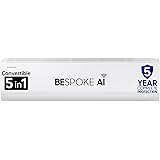Sheet metal laser cutters have become an essential tool in modern manufacturing and fabrication industries. These machines use powerful laser beams to cut, engrave, or shape sheet metals with high precision and speed. Their introduction has brought significant improvements in manufacturing processes, but before making an investment, businesses should also consider several key factors.
One of the primary ways sheet metal laser cutters improve manufacturing is through enhanced precision and accuracy. Traditional cutting methods such as shearing or mechanical punching often leave rough edges and require secondary finishing processes. Laser cutters, on the other hand, deliver clean, smooth edges with minimal burrs. This precision reduces waste and the need for rework, leading to cost savings and higher product quality.
Another major advantage is versatility. Sheet metal laser cutters can handle a variety of metals, including stainless steel, carbon steel, aluminum, brass, and copper. They can also process different thicknesses, typically from thin sheets of 0.5mm up to thicker plates of around 25mm, depending on the machine’s power. This flexibility makes them suitable for industries like automotive, aerospace, electronics, and construction, where a variety of metal parts are required.
Speed and efficiency are other strong points. Laser cutters can process complex shapes and intricate patterns much faster than conventional methods. This is especially beneficial in batch production, where quick turnaround times are essential. Furthermore, modern CNC-controlled laser cutters can automate the cutting process, reducing labor costs and allowing for continuous, unattended operation.
The technology also supports nesting software, which optimizes material usage by arranging multiple parts on a single sheet in the most space-efficient way. This reduces material waste and lowers overall production costs, making sheet metal laser cutting not only efficient but also environmentally friendly.
However, while the benefits are clear, there are important factors businesses should consider before investing in a sheet metal laser cutter.
First, the initial capital investment can be substantial. High-powered fiber laser cutters suitable for industrial use can range from tens of thousands to several hundred thousand dollars. Companies should evaluate their production volume and calculate potential savings in labor, materials, and time to ensure a positive return on investment.
Next, operating costs such as electricity, maintenance, and consumables (like protective lenses and nozzles) should be factored into the decision. While fiber laser cutters are energy-efficient compared to older technologies, the ongoing costs still need careful budgeting.
Training and safety are also critical considerations. Operators must be properly trained to handle laser equipment safely and efficiently. Additionally, machines should be equipped with safety enclosures and ventilation systems to manage fumes and protect workers from laser radiation.
Lastly, businesses must assess the cutting capacity and ensure the machine matches their specific needs. For example, if a company primarily cuts thick steel plates, they will require a higher-power laser, whereas for thin aluminum sheets, a lower-power machine might suffice.
In conclusion, sheet metal laser cutters offer substantial benefits in terms of precision, speed, efficiency, and versatility, leading to streamlined manufacturing processes and better product quality. However, careful consideration of costs, capacity, and safety is essential to ensure the investment aligns with business goals and operational requirements.
Samsung 1.5 Ton 3 Star AI Inverter Smart Split AC (WiFi, Energy Saving, Voice Control, Powerful Cooling, Copper, Digital Inverter, 4 Way swing, 5 Step Convertible, BESPOKE AI AR50F18D1LHNNA)
₹36,490.00 (as of 6 May, 2025 17:19 GMT +05:30 - More infoProduct prices and availability are accurate as of the date/time indicated and are subject to change. Any price and availability information displayed on [relevant Amazon Site(s), as applicable] at the time of purchase will apply to the purchase of this product.)LONGWAY Kiger P1 1200 mm/48 inch Ultra High Speed 3 Blade Anti-Dust Decorative Star Rated Ceiling Fan (Smoked Brown, Pack of 1)
₹1,099.00 (as of 6 May, 2025 17:19 GMT +05:30 - More infoProduct prices and availability are accurate as of the date/time indicated and are subject to change. Any price and availability information displayed on [relevant Amazon Site(s), as applicable] at the time of purchase will apply to the purchase of this product.)Shalimar Plastic Premium Garbage Bags (Lavender Fragrance) Size 19 X 21 Inches (Medium) 120 Bags (4 Rolls) Dustbin Bag/Trash Bag - Black Color, 120 count
₹273.00 (as of 7 May, 2025 00:11 GMT +05:30 - More infoProduct prices and availability are accurate as of the date/time indicated and are subject to change. Any price and availability information displayed on [relevant Amazon Site(s), as applicable] at the time of purchase will apply to the purchase of this product.)Perpetual Plastic Wall Mounted Self Adhesive Toothbrush Holder/Toothbrush Holders for Bathroom/Toothbrush Holders/Brush Holder, Toothpaste, Shaver, Razor & Make up Brush (2Pcs)
₹135.00 (as of 6 May, 2025 17:19 GMT +05:30 - More infoProduct prices and availability are accurate as of the date/time indicated and are subject to change. Any price and availability information displayed on [relevant Amazon Site(s), as applicable] at the time of purchase will apply to the purchase of this product.)Satpurush Fridge Storage Boxes (Pack of 6) Freezer & Refrigerator Organizer Containers Kitchen Storage Container Set Kitchen Accessories Items for Home 1200 ml Food Storage Box, Plastic, White
₹298.00 (as of 6 May, 2025 17:19 GMT +05:30 - More infoProduct prices and availability are accurate as of the date/time indicated and are subject to change. Any price and availability information displayed on [relevant Amazon Site(s), as applicable] at the time of purchase will apply to the purchase of this product.)Discover more from The General Post
Subscribe to get the latest posts sent to your email.




